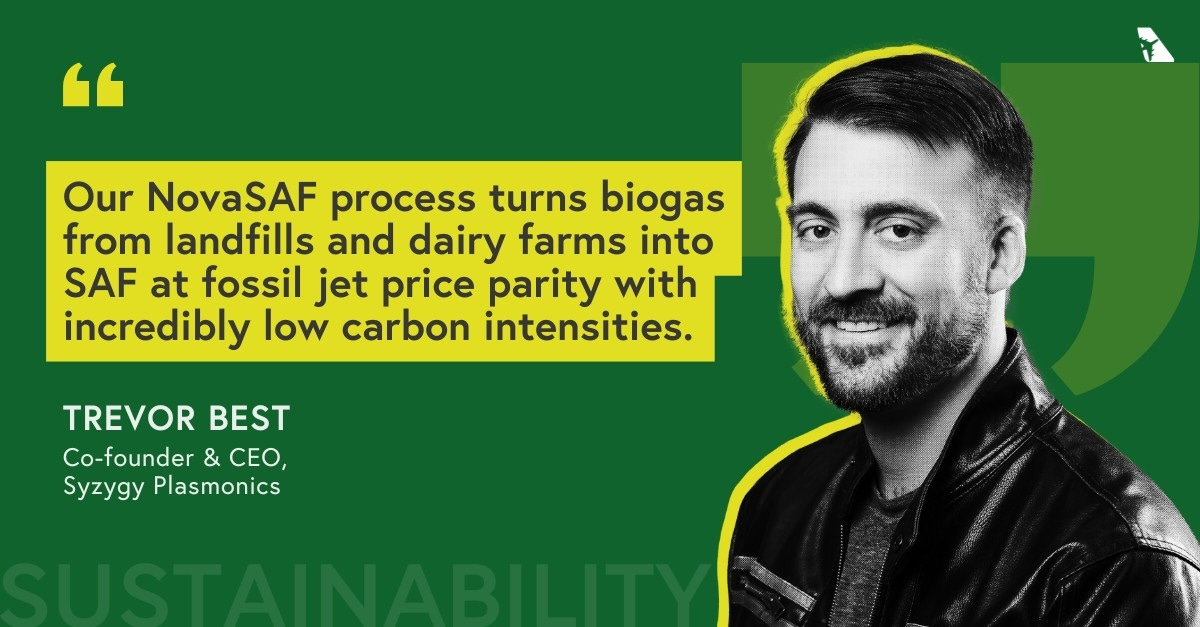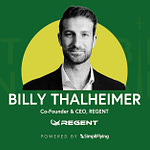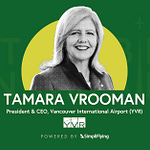In this episode of our ‘Sustainability in the Air’ podcast, Trevor Best, Co-founder and CEO of Syzygy Plasmonics, speaks with SimpliFlying’s CEO Shashank Nigam about how his company is developing a photocatalytic technology that converts waste biogas into sustainable aviation fuel (SAF) at prices competitive with conventional jet fuel.
Syzygy is currently building the world’s first biogas-to-SAF plant in Uruguay that can produce more than 350,000 gallons of SAF annually when fully operational.
Here are the key highlights of the conversation:
How biogas-to-SAF tackles two climate problems simultaneously (3:10)
How photocatalysis differs from thermal processes (10:05)
Achieving jet fuel parity through stranded biogas assets (13:03)
Syzygy’s Uruguay SAF plant (17:46)
Global scaling strategy through cluster developments (19:41)
The global biogas opportunity: 580 million tonnes per year potential (23:39)
Airline responses and building credibility through evidence (27:03)
Beyond aviation: Platform technology for hydrogen and methanol (39:31)
Rapid Fire! (44:50)
Keep reading for a detailed overview of the episode.
Why biogas-to-SAF offers unique advantages
Syzygy’s NovaSAF™ process is designed to turn waste gases from manure, landfills, or wastewater plants into jet fuel. At its core is the company’s proprietary Rigel™ e-reforming photoreactor, which works together with Fischer-Tropsch (FT) and hydrotreating systems to produce sustainable aviation fuel.
This approach offers several advantages over other SAF production pathways:
Minimal cleanup: Most biogas is a mix of methane, CO₂, nitrogen, oxygen, and ammonia. Traditional systems need expensive purification. Syzygy’s approach can handle the raw biogas almost as-is, with only low-cost sulfur removal.
Efficient at small scale: Thermal processes typically lose efficiency when scaled down, making them viable only at large refineries. Photocatalysis, however, maintains high efficiency at the distributed scale of landfills or dairy farms — unlocking resources that would otherwise be stranded.
Higher fuel yields: Instead of separating out CO₂, the system uses it as part of the fuel. “For the same amount of capex, you can get more fuel because all the mass that was in the CO2 is included in the fuel,” explains CEO Trevor Best.
A double climate win: Methane emissions are among the most potent contributors to global warming. By capturing methane that would otherwise escape and converting it into SAF, Syzygy reduces emissions in both waste and aviation. As Best puts it, “this allows us to take those emissions from one sector and turn them into fuel and eliminate emissions from another sector.”
5 ways Syzygy is building a viable biogas-to-SAF business
1. Systematic idea validation before commitment
Syzygy emerged from a disciplined process of evaluating and rejecting potential ventures. Best and his co-founder, Dr. Suman Khatiwada, built a framework to judge potential ventures: Was the science credible? Could the market adopt it? Did the economics add up? Would it make a real impact?
“The goal is to kill an idea as fast as you possibly can so you can get on to some idea that will work,” Best explains. They sifted through university research and journal papers, running quick techno-economic analyses to spot weaknesses. Most ideas collapsed quickly under scrutiny.
Then they came across plasmonic photocatalysis. This time, the usual flaws did not appear. “I’ll be damned, this was the one that would not die,” Best says. “No matter what questions we asked: What kind of efficiencies can it achieve? How does it scale up? What does the production process look like? For the life of us, we could not find a reason why this wouldn’t work.”
Eight years later, Syzygy has raised $135 million and is in offtake discussions for SAF, proving their instinct was right.
2. Targeting stranded biogas assets for cost advantage
Syzygy’s business model relies on accessing low-cost feedstock and electricity. The company achieves this by tapping into “stranded” biogas sources – such as landfills and dairy farms that are too remote to connect profitably to natural gas grids.
“Because our technology is scalable, we can go to stranded assets. This includes places like landfills or dairy farms that are too far from the natural gas grid to connect economically,” Best explains. “By shrinking down to their size and building on-site where the gas has no other market, we can secure very low feedstock prices.”
The economics depend on hitting the right thresholds. Syzygy is targeting gas at $5–6 per MMBtu and electricity at $50–60 per megawatt. “At those levels, the economics really start to work,” Best says. “And if we can get just a bit below that, we can actually reach jet fuel parity for the airlines.”
3. NovaSAF 1 project
Syzygy is now moving into real-world deployment. In Durazno, Uruguay, the company is building NovaSAF 1 – the world’s first electrified biogas-to-SAF plant. Designed as a modular facility, it will convert dairy biogas and renewable electricity into drop-in SAF when it comes online in 2027, with support from partners including Honeywell, Velocys and Kent.
“The key reason we chose Uruguay is because it already has a decarbonised grid,” Best notes. “The electricity you pull from the grid has very low carbon intensity. If we tried to do this project elsewhere, there’s a good chance we’d have to build a renewable energy source like solar or wind alongside it, and developing both at once would have been a real challenge.”
The project is anchored by long-term feedstock and site agreements with Estancias del Lago (EDL), one of Uruguay’s largest dairy and agri-energy operators. By capturing methane from nearly 14,000 cows, NovaSAF 1 is expected to produce more than 350,000 gallons of SAF per year.
4. Cluster development strategy for global scaling
Rather than betting on a single giant refinery, Syzygy is pursuing a cluster model – scaling through networks of smaller sites that feed into a central hub. The reason is simple: Syzygy’s reactors can efficiently turn biogas into syngas at small facilities, but the final steps of converting syngas into SAF require a larger plant to be cost-effective.
As Best explains, “What we’re planning on doing within each of these geographies is developing a cluster of sites, like 10 or 15 sites together that all turn the gas into a Fischer-Tropsch liquid and then transport that liquid to a central point to be upgraded to SAF.”
To make the economics work, a cluster needs to produce nearly 8 million gallons per year. The financial case strengthens significantly once production reaches 20 million gallons or more.
Syzygy is tailoring each cluster to local feedstocks. In the United States and the UK, the focus is on landfill gas. In Brazil, the company is looking at sugarcane residues, while in India the emphasis is on dairy manure.
5. Building credibility through evidence
For Syzygy, winning the confidence of airlines and investors is just as critical as proving the technology itself. Interest in jet fuel parity SAF is strong, but potential partners want to see hard evidence before committing.
“We’re approaching airlines in the U.S. and other regions and asking if they want to offtake SAF at jet A parity. The response is always enthusiastic, but they also want proof that it’s real,” Best acknowledges.
To address this, the company has gone beyond lab results. It has published technical white papers and built detailed project data rooms with locked-in biogas prices, signed leases, power agreements, and construction timelines. “We’ve created a whole project data room where we’ve got a bunch of people who are experts in project finance absolutely putting us through the ringer around our Uruguay project so that we can share that data immediately,” says Best.
The scale of the opportunity, however, is hard to ignore. The International Energy Agency (IEA) estimates that global biogas reserves could theoretically yield 580 million tons of SAF each year, more than today’s total jet fuel consumption. While not all of this feedstock can be developed economically, it underscores the potential for biogas-to-SAF to become a major part of aviation’s decarbonisation pathway.
With its Uruguay demonstration plant under construction and strategic backing from global energy companies like Chevron, Equinor and Aramco, Syzygy is working to prove that plasmonic photocatalysis is more than a lab breakthrough — it is a commercially viable route to price-competitive SAF.
Get our new book
Our new book Sustainability in the Air: Volume Two is now available for purchase on Amazon. Learn more about the startups, strategists, and sceptics working to close the gap between growth and green ambition.
‘Sustainability in the Air’ is the world’s leading podcast dedicated to sustainable aviation. Through in-depth conversations with top aviation leaders, we break through the clutter and provide a clear roadmap for a net-zero future












